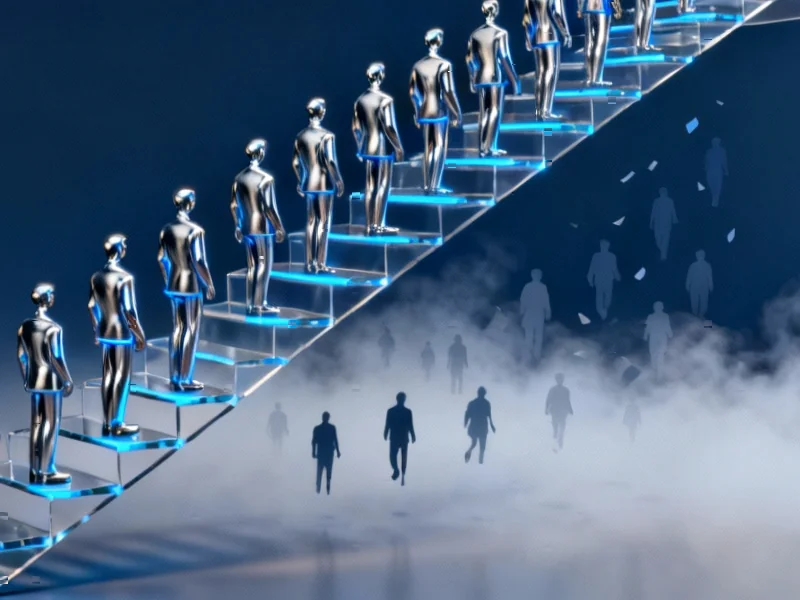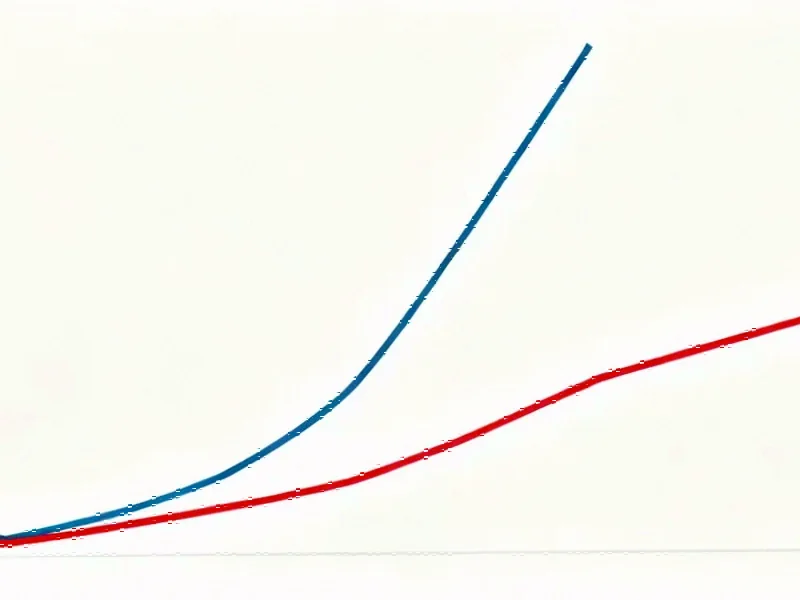Study Projects Major Workforce and GDP Impacts from Immigration Restrictions
A comprehensive analysis from the National Foundation for American Policy reveals that current immigration policies could reduce the U.S. workforce by millions of workers and significantly slow economic growth over the coming decade. The research indicates these changes would affect nearly every sector of the American economy, from technology to agriculture.
Table of Contents
- Study Projects Major Workforce and GDP Impacts from Immigration Restrictions
- Multiple Policy Changes Driving Workforce Changes
- Economic Growth Projections Revised Downward
- Sector-Specific Impacts Emerging
- Broader Economic Contributions at Stake
- Administration Perspective and Counterarguments
- Long-Term Implications for U.S. Competitiveness
The projected workforce reduction stands at 6.8 million by 2028 and 15.7 million by 2035, with net labor force decreases of 4 million and 11 million workers respectively during those timeframes. This contraction comes despite natural population growth, highlighting immigration’s critical role in maintaining workforce stability.
Multiple Policy Changes Driving Workforce Changes
The study examined several immigration policy shifts implemented by the Trump administration, including reduced refugee admissions, travel restrictions affecting 19 countries, termination of Temporary Protected Status, and limitations on work authorization for international students. These measures collectively restrict both legal and illegal immigration pathways.
According to the analysis, changes to legal immigration policies account for 2.8 million of the projected workforce reduction, while policies addressing illegal immigration contribute another 4 million to the total. The research doesn’t even account for newer requirements like the $100,000 one-time fee for H-1B visas, suggesting the actual impact might be even greater.
Economic Growth Projections Revised Downward
The economic consequences extend beyond workforce numbers. The NFAP study projects that immigration restrictions will lower the average annual economic growth rate from 1.8% to 1.3% between fiscal years 2025 and 2035—representing a reduction of nearly one-third in growth potential.
Mark Regets, labor economist and senior fellow at NFAP, challenges the assumption that reducing immigration benefits U.S. workers. “Immigrants both create demand for the goods and services produced by U.S.-born workers and work alongside them in ways that increase productivity for both groups,” he noted in the report.
Sector-Specific Impacts Emerging
Different industries face distinct challenges from the changing immigration landscape:, according to industry developments
- Technology: The $100,000 H-1B visa fee particularly affects companies like Amazon, Microsoft, and Meta that heavily recruit through this program
- Agriculture: The Labor Department has acknowledged risks of “labor shortage exacerbated by the near total cessation of the inflow of illegal aliens”
- Healthcare and Education: These sectors could lose hundreds of thousands of immigrant workers
- Hospitality and Construction: Industries facing existing labor shortages that rely significantly on foreign-born workers
Broader Economic Contributions at Stake
Research from the American Immigration Council indicates that households led by recent arrivals from the 19 countries affected by travel bans earned $3.2 billion in household income, paid $715.6 million in taxes, and held $2.5 billion in spending power. These economic contributions now face uncertainty., as earlier coverage
Nan Wu, research director at AIC, suggests the full impact might be even greater than current projections indicate. “Given the unprecedented scale of these actions, it’s difficult to quantify the chilling effect they may have on immigrants who might otherwise choose to move to or remain in the United States,” Wu told Fortune.
Administration Perspective and Counterarguments
The White House maintains a different view of the labor situation. A spokesperson referenced a CNBC article indicating that over one in ten young adults are neither employed nor in education or training, suggesting significant untapped domestic workforce potential.
“There is no shortage of American minds and hands to grow our labor force,” White House spokeswoman Abigail Jackson stated, emphasizing the administration’s commitment to creating opportunities for American workers while enforcing immigration laws.
Long-Term Implications for U.S. Competitiveness
Beyond immediate workforce numbers, experts express concern about long-term talent pipeline issues. International students, who represent a critical source of high-skilled talent, may increasingly choose other countries for education and career opportunities. This shift could particularly affect STEM fields where innovation depends heavily on global talent.
The Congressional Budget Office had previously projected that removing 290,000 immigrants between 2026 and 2029 could create labor shortages and drive inflation—concerns that align with the NFAP study’s broader findings about economic consequences.
As these policies continue to unfold, businesses across multiple sectors are preparing for potential workforce challenges and adjusting their long-term strategic planning accordingly.
Related Articles You May Find Interesting
- Manchester Police Deploy Facial Recognition Vans in Bold Crime-Fighting Experime
- US Government Shutdown Throws Wrench in Unilever’s €15 Billion Ice Cream Demerge
- NASA Expands Moon Landing Competition Beyond SpaceX To Accelerate Artemis Timeli
- The Dynamic Nature of ADHD: Why Symptom Fluctuation Doesn’t Mean Overdiagnosis
- German AI Energy Pioneer etalytics Secures €16M Total Series A to Drive Global I
References & Further Reading
This article draws from multiple authoritative sources. For more information, please consult:
- https://nfap.com/research/new-nfap-policy-brief-the-economic-impact-of-the-trump-administrations-immigration-policies/
- https://www.whitehouse.gov/presidential-actions/2025/01/realigning-the-united-states-refugee-admissions-program/
- https://www.americanimmigrationcouncil.org/report/trump-2025-travel-ban/
- https://www.federalregister.gov/documents/2025/10/02/2025-19365/adverse-effect-wage-rate-methodology-for-the-temporary-employment-of-h-2a-nonimmigrants-in-non-range#p-240
- https://brookslawfirm.com/blog/study-industries-will-be-impacted-by-latest-immigration-laws/
This article aggregates information from publicly available sources. All trademarks and copyrights belong to their respective owners.
Note: Featured image is for illustrative purposes only and does not represent any specific product, service, or entity mentioned in this article.



